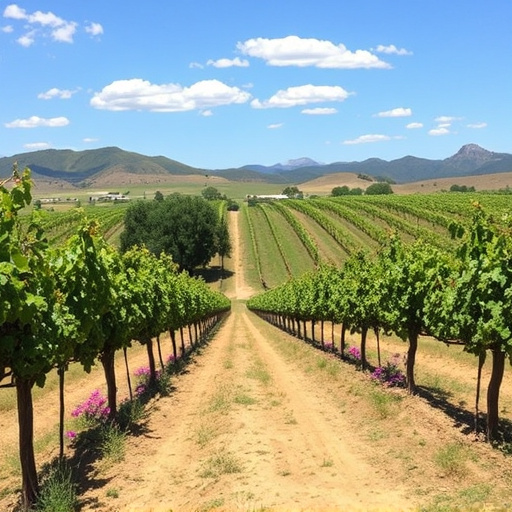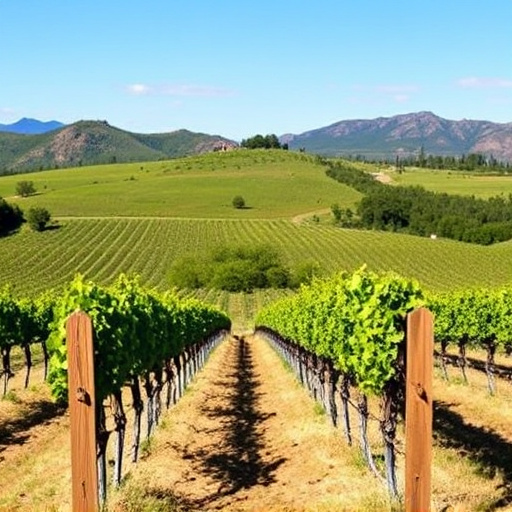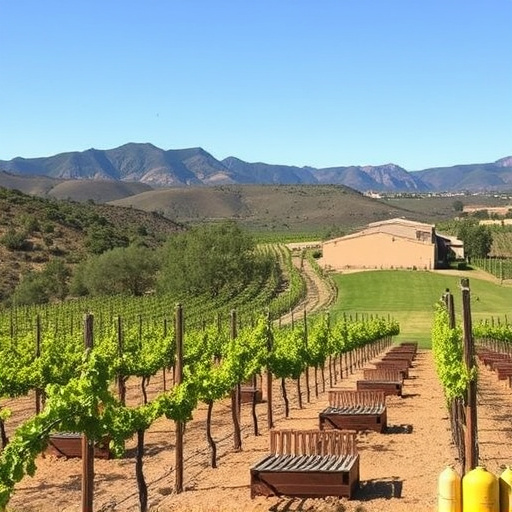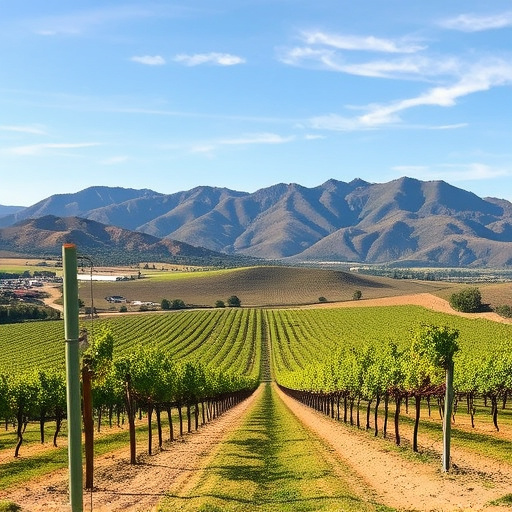Sonoita, AZ's high-elevation vineyards (vineyards sonoita az) offer ideal conditions for grape cultivation: cooler days, dramatic night temperature drops, and diverse soil types (from gravelly to sandy loam). These factors slow ripening, enhancing acidity and flavor concentration in grapes like Viognier and Sauvignon Blanc. The region's unique microclimates and biodiversity reduce pesticide use while preserving natural grape balances, making it a standout wine region for both enthusiasts and those seeking sustainable vineyard experiences.
“Uncover the enchanting world of high-elevation vineyards in Sonoita, Arizona, where the terrain meets the vines. This unique microclimate fosters distinct characteristics in neighboring estates’ wines. From soil composition to grape varieties, each estate offers a nuanced experience. Our journey delves into the secrets of Sonoita’s vineyards, comparing flavors and styles while exploring how elevation and location impact the final product. Discover the magic of these AZ vineyards and their remarkable offerings.”
- Selecting High-Elevation Vineyards in Sonoita, AZ
- – Discussion on the unique characteristics and benefits of high-elevation vineyards
- – Comparison of soil types, climate conditions, and grape varieties typically grown
Selecting High-Elevation Vineyards in Sonoita, AZ

When selecting high-elevation vineyards in Sonoita, AZ, winemakers carefully consider factors like soil composition, microclimate, and exposure to sun and wind. Sonoita’s unique geographical features make it an ideal location for cultivating grapes at elevations exceeding 3,500 feet. This elevation provides cooler temperatures during the day and starker drops in temperature at night, creating a slow ripening process that allows for the development of complex flavors and aromas.
The region’s diverse soil types—from gravelly to sandy loam—offer winemakers a range of options to suit different grape varieties. These conditions foster a vibrant ecosystem where beneficial insects thrive, helping to naturally manage pest populations. The result is high-quality grapes that contribute to the exceptional character of wines produced in this part of Arizona.
– Discussion on the unique characteristics and benefits of high-elevation vineyards

High-elevation vineyards in Sonoita, AZ, offer a unique set of characteristics that contribute to the distinct quality and flavor profiles of their wines. At higher elevations, grapes ripen more slowly due to cooler temperatures, resulting in a higher acidity and more concentrated flavors. This slow ripening process allows for the development of complex aromas and tastes, setting these wines apart from their lower-elevation counterparts.
The benefits of high-elevation vineyards extend beyond just flavor. The unique microclimate and soil conditions encourage biodiversity, leading to healthier vines and reduced reliance on pesticides. Additionally, the higher elevation provides a more pronounced diurnal temperature variation, with cooler nights that help preserve the grape’s natural balance. These factors collectively result in wines that are not only delicious but also environmentally friendly, making the Sonoita wine region a standout choice for wine enthusiasts seeking unique and sustainable vineyard experiences.
– Comparison of soil types, climate conditions, and grape varieties typically grown

In the vibrant vineyards of Sonoita, Arizona, neighboring estates offer a fascinating contrast in soil types, climate conditions, and grape varieties grown, all of which contribute to the unique characteristics of their wines. The region’s diverse microclimates range from cooler, high-elevation areas to warmer, lower-lying regions, each presenting distinct challenges and opportunities for viticulture. Soils vary equally, with some estates boasting well-draining sandy loams ideal for cultivating grapevines, while others navigate more challenging terrains like clay-rich soils that demand meticulous care.
These variations translate directly into the choice of grape varieties. High-elevation vineyards tend to favor lighter, more delicate grapes like Viognier and Sauvignon Blanc, which thrive in cooler temperatures and acidic soils. In contrast, lower-altitude regions often see a proliferation of fuller-bodied varieties such as Syrah and Tempranillo, better adapted to warmer climates and higher humidity levels. Understanding these nuances is key to appreciating the subtle yet significant differences between wines from neighboring Sonoita estates.
In the heart of Sonoita, AZ, high-elevation vineyards offer a distinct advantage in crafting exquisite wines. These neighboring estates showcase the unique terroir of the region, with varied soil compositions and climate patterns contributing to diverse grape expressions. From robust reds to crisp whites, each vineyard brings its own character, enhancing the overall richness of the local wine scene. Exploring these high-altitude gems allows wine enthusiasts to appreciate the intricate differences and enjoy the vibrant diversity of vineyards in Sonoita, AZ.
